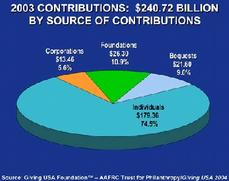The Donation-Payment Gift Card Concept
R. Crane, J. Escobar and D. Sornette, working paper (2005)
Potential upside risks in the card payment industry
- Growth of debit and credit card payments, personal online payment methods, redesign of large-value payment systems
- Money and payment instruments have widely recognized social, institutional and psychological aspects
- The gift and prepaid card industry: nearly one-half of U.S. consumers used a gift card during the past year (2004) (150 million cards)
- Problem with unused card value (“rational inattention”) (5% of $50 = $375 million); lawsuits and lots of dispute between states and companies
- Social and psychological impact of gift cards: Is it appropriate or even socially optimal that the unused money go to the issuers or to the states’ treasury?
- Proposition: synergize the goals of a group with those of an individual in a system with finite resources; Align the goals of a corporation with those of the individual which bestows a mutual benefit to all involved parties, as well as to society as a whole (Arrow impossibility theorem)
- Address the problem with “bottom line” approach to corporate decision making, whereby the direction of the company is determined not by outcomes which benefit society, but rather by that which benefits the group of share-holders.
- Utility theory vs non-economic happiness factors (altruism, social preferences, customer emotions, self-image …)
Advantage and novelties of the Donation-Payment cards
- Combines the safety and anonymity of cash with the convenience of electronic payment cards such as debit and credit cards.
- Large and relatively untapped market which is just beginning to be explored by a few companies
- Large expected revenues for Charities, adding to the charities’ fundraising efficiency and raising their visibility.
- Provides people with a service they want while facilitating their desire to donate their spare change (kind of “organic commerce”)
- The Donation-Payment card will serve people who want to make purchases online without the fear of identity theft or invasion of privacy.
- Serving the 60 million Americans who do not have a traditional banking relationship but desire the convenience of an electronic payment card that works like a VMDA card.
- Making small e-commerce transactions affordable, while providing a secure, convenient payment method.

